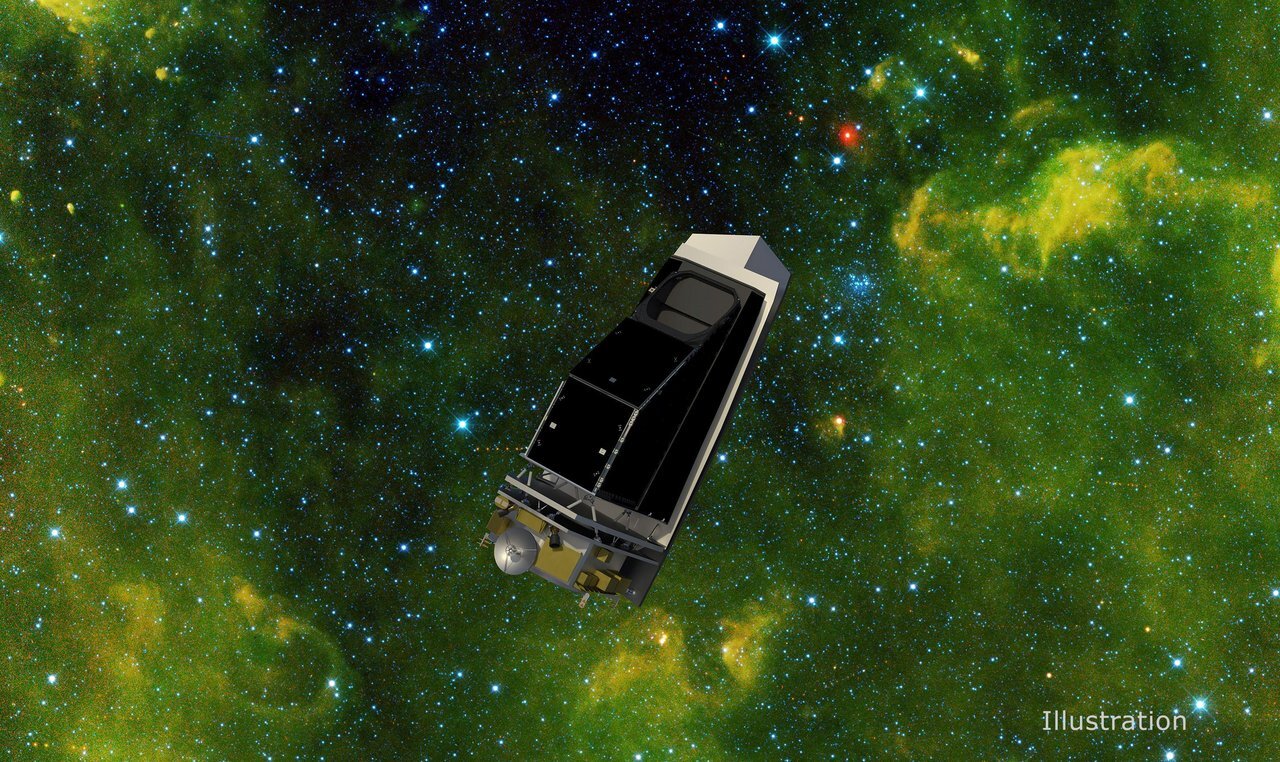24.12.2022

NEO Surveyor is the first purpose-built space telescope that will advance NASA’s planetary defense efforts by finding and tracking hazardous near-Earth objects.
A space telescope designed to search for the hardest-to-find asteroids and comets that stray into Earth’s orbital neighborhood, NASA’s Near-Earth Object Surveyor (NEO Surveyor) recently passed a rigorous technical and programmatic review. Now the mission is transitioning into the final design-and-fabrication phase and establishing its technical, cost, and schedule baseline.
The mission supports the objectives of NASA’s Planetary Defense Coordination Office (PDCO) at NASA Headquarters in Washington. The NASA Authorization Act of 2005 directed NASA to discover and characterize at least 90% of the near-Earth objects more than 140 meters (460 feet) across that come within 30 million miles (48 million kilometers) of our planet’s orbit. Objects of this size are capable of causing significant regional damage, or worse, should they impact the Earth.
“NEO Surveyor represents the next generation for NASA’s ability to quickly detect, track, and characterize potentially hazardous near-Earth objects,” said Lindley Johnson, NASA’s Planetary Defense Officer at PDCO. “Ground-based telescopes remain essential for us to continually watch the skies, but a space-based infrared observatory is the ultimate high ground that will enable NASA’s planetary defense strategy.”
Find Them First
Managed by NASA’s Jet Propulsion Laboratory in Southern California, NEO Surveyor will journey a million miles to a region of gravitational stability – called the L1 Lagrange point – between Earth and the Sun, where the spacecraft will orbit during its five-year primary mission.
From this location, the NEO Surveyor will view the solar system in infrared wavelengths – light that is invisible to the human eye. Because those wavelengths are mostly blocked by Earth’s atmosphere, larger ground-based observatories may miss near-Earth objects that this space telescope will be able to spot by using its modest light-collecting aperture of nearly 20 inches (50 centimeters).
NEO Surveyor’s cutting-edge detectors are designed to observe two heat-sensitive infrared bands that were chosen specifically so the spacecraft can track the most challenging-to-find near-Earth objects, such as dark asteroids and comets that don’t reflect much visible light. In the infrared wavelengths to which NEO Surveyor is sensitive, these objects glow because they are heated by sunlight.
In addition, NEO Surveyor will be able to find asteroids that approach Earth from the direction of the Sun, as well as those that lead and trail our planet’s orbit, where they are typically obscured by the glare of sunlight – objects known as Earth Trojans.
“For the first time in our planet’s history, Earth’s inhabitants are developing methods to protect Earth by deflecting hazardous asteroids,” said Amy Mainzer, the mission’s survey director at the University of Arizona in Tucson. “But before we can deflect them, we first need to find them. NEO Surveyor will be a game-changer in that effort.”
The mission will also help to characterize the composition, shape, rotation, and orbit of near-Earth objects. While the mission’s primary focus is on planetary defense, this information can be used to better understand the origins and evolution of asteroids and comets, which formed the ancient building blocks of our solar system.
When it launches, NEO Surveyor will build upon the successes of its predecessor, the Near-Earth Object Wide-field Infrared Survey Explorer (NEOWISE). Repurposed from the WISE space telescope after that mission ended in 2011, NEOWISE proved highly effective at detecting and characterizing near-Earth objects, but NEO Surveyor is the first space mission built specifically to find large numbers of these hazardous asteroids and comets.
Already in the Works
After the mission passed this milestone on Nov. 29, key instrument development got under way. For instance, the large radiators that will allow the system to be passively cooled are being fabricated. To detect the faint infrared glow of asteroids and comets, the instrument’s infrared detectors need to be much cooler than the spacecraft’s electronics. The radiators will perform that important task, eliminating the need for complex active cooling systems.
Additionally, construction of the composite struts that will separate the telescope’s instrumentation from the spacecraft has begun. Designed to be poor heat conductors, the struts will isolate the cold instrument from the warm spacecraft and sunshield, the latter of which will block sunlight that might otherwise obscure the telescope’s view of near-Earth objects and heat up the instrument.
Progress has also been made developing the instrument’s infrared detectors, beam splitters, filters, electronics, and enclosure. And work has begun on the space telescope’s mirror, which will be formed from a solid block of aluminum and shaped by a custom-built diamond-turning machine.
“The project team, including all of our institutional and industrial collaborators, is already very busy designing and fabricating components that will ultimately become flight hardware,” said Tom Hoffman, NEO Surveyor project manager at JPL. “As the mission enters this new phase, we’re excited to be working on this unique space telescope and are already looking forward to our launch and the start of our important mission.”
More About the Mission
The mission is tasked by NASA’s Planetary Science Division within the Science Mission Directorate; program oversight is provided by the PDCO, which was established in 2016 to manage the agency’s ongoing efforts in planetary defense. NASA’s Planetary Missions Program Office at Marshall Space Flight Center provides program management for NEO Surveyor.
The project is being developed by JPL and is led by survey director Amy Mainzer at the University of Arizona. Established aerospace and engineering companies have been contracted to build the spacecraft and its instrumentation, including Ball Aerospace , Space Dynamics Laboratory, and Teledyne. The Laboratory for Atmospheric and Space Physics at the University of Colorado, Boulder will support operations, and IPAC-Caltech in Pasadena, California, is responsible for processing survey data and producing the mission’s data products. Caltech manages JPL for NASA.
Quelle: NASA

